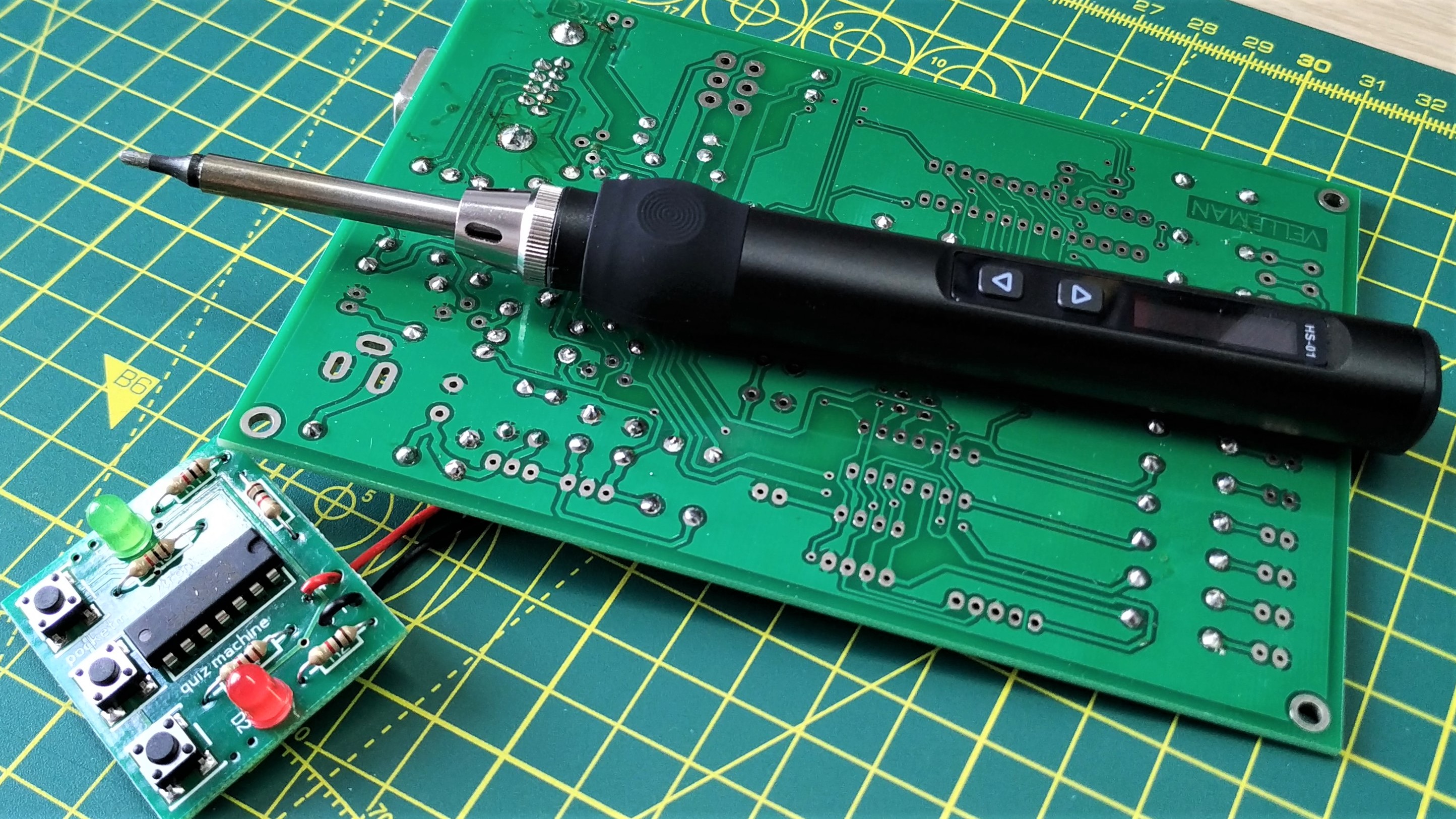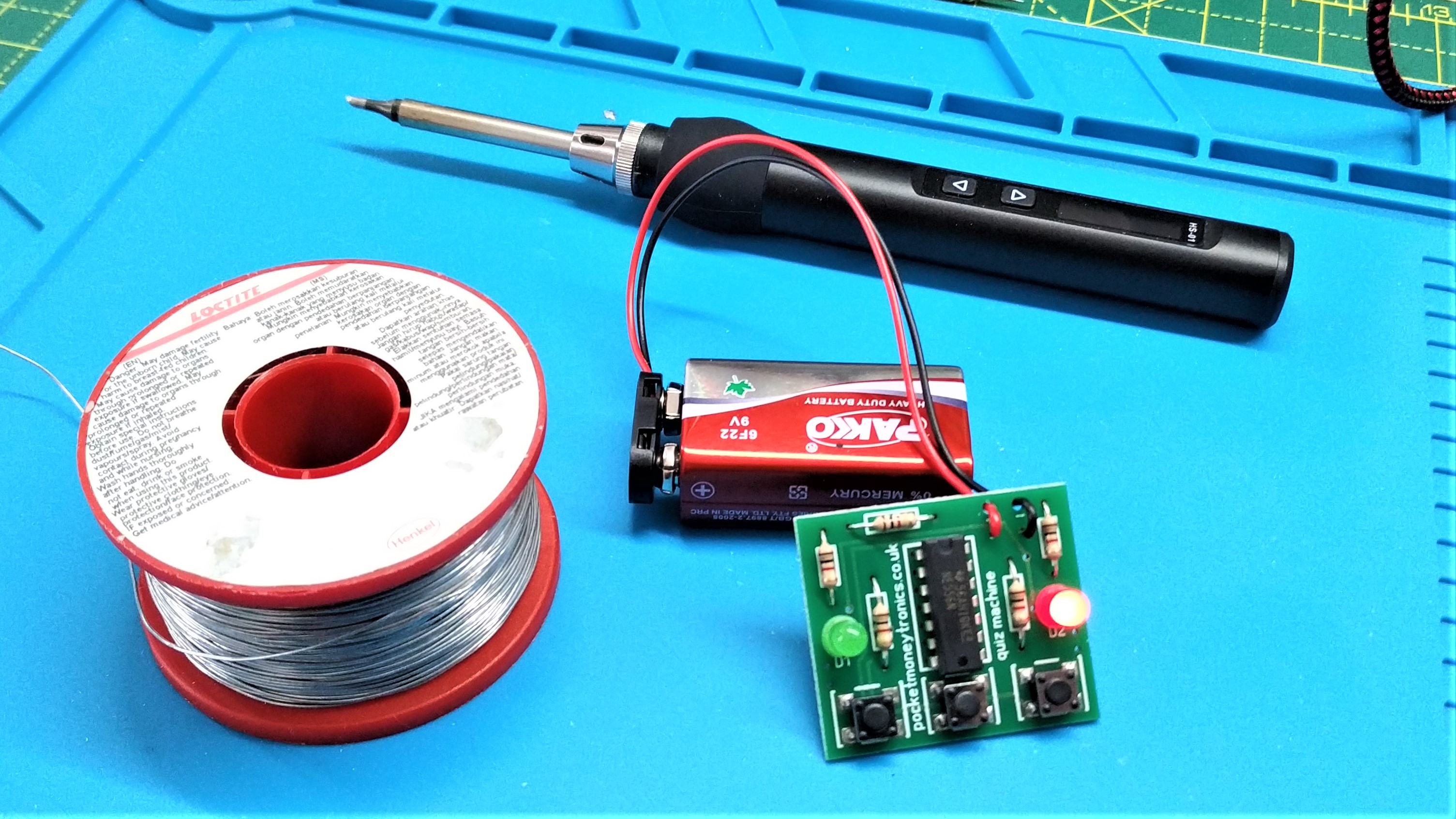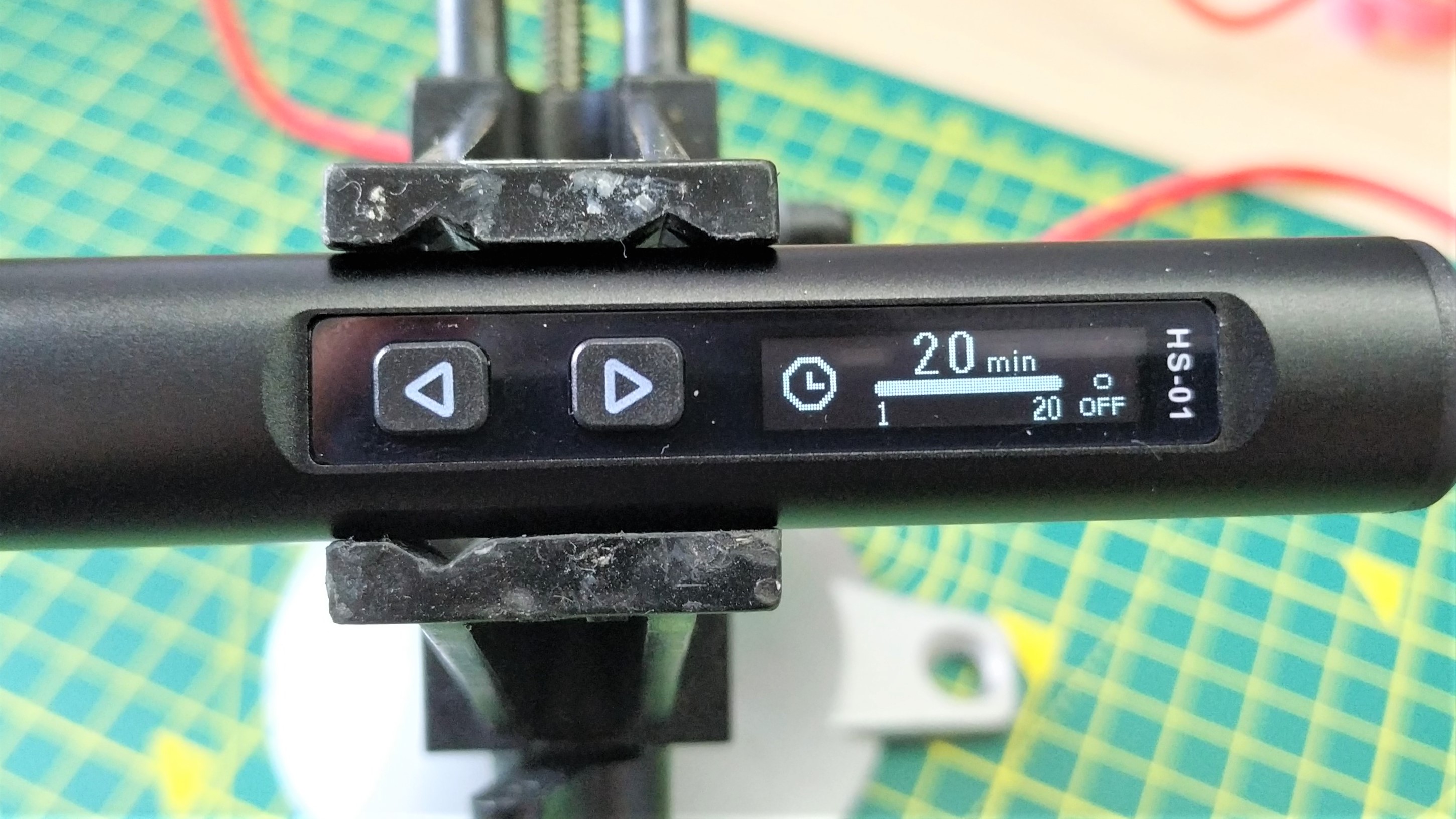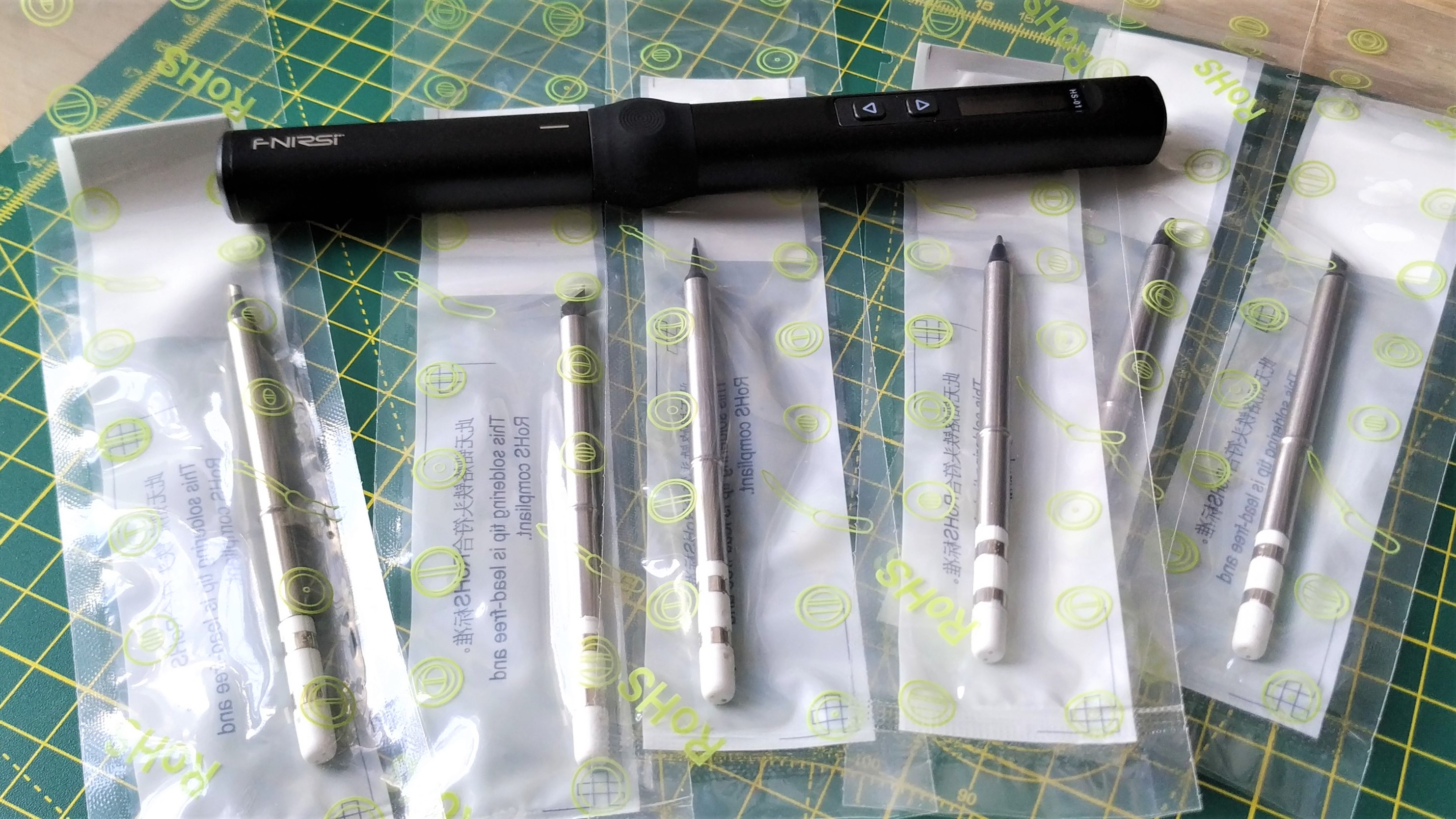Tom's Hardware Verdict
Low cost, high precision smart soldering iron. We just wish it was compatible with Pinecil/TS100/TS101 tips.
Pros
- +
Low cost
- +
Easy to use
- +
High temperatures
- +
Fast heat up
Cons
- -
Slightly larger than most smart soldering irons
- -
Only support USB C power
- -
Not compatible with TS100/TS101/Pinecil tips
Why you can trust Tom's Hardware
There are now a plethora of smart soldering irons available. By ‘smart’ we mean that they are running an operating system and have a temperature control system. The first smart soldering iron that came our way was Miniware’s TS100, followed swiftly by Pine64’s Pinecil and Pinecil v2. Mniware fired off two more smart soldering irons, the TS80P and the TS101 and for a time that was the pool from which makers could choose from.
Fnirsi’s HS-01, a $30 entry to the smart soldering iron scene shares the Pinecil price point, but how does it perform against Pinecil against the best soldering irons and soldering stations? To learn that, and more we had to break out some more soldering kits, and get making!
Fnirsi HS-01 Specifications
| Power | 65W (20V at 3.25A) |
| Soldering Iron Tip | HS01-BC2 |
| Display | 0.87 inch OLED |
| Temperature | Max 420°C / 788°F |
| Dimensions | 184 x 20 mm |
Fnirsi HS-01 Look and Feel




The Fnirsi HS-01 is a larger soldering iron than the TS101 and the Pinecil V2, but that is not to the detriment of its design. The $30 smart soldering iron has a metal body, rubberized finger guard and a screw collet to retain the soldering tip. The added length gives us plenty of space between the inputs and the business end of the iron.
Keeping our fingers away from the buttons, unlike with the TS101, means we don’t accidentally catch a button and change the temperature. That said, changing temperature requires two button pushes, one to activate the menu, and the other to change the temp. Increasing the temperature means we have to push the button pointing to the USB-C port, decreasing, towards the tip. This felt counterintuitive but after setting our temperature to 350 degrees Celsius we rarely used the buttons.
The aforementioned USB-C port is the only means to power the soldering iron but there is no included USB C cable.The Fnirsi HS-01 works with many USB PD voltages, from 9 to 24V. Using our Pine Power USB C power source we had a stable 20V. The omission of a DC jack is unfortunate but not a deal-breaker. There are now many compatible USB C PD battery packs that can be used to power the iron.
The soldering iron tip is held in place using two mechanisms. Firstly a friction fit keeps the bit secure in the body of the iron. Secondly the collet screws into place and locks the tip. On the TS101 and Pinecil v2 we need to secure the tips using a screw, but not with the Fnirsi HS-01.
In the box is a cap used to cover the soldering iron tip when not in use. The cap is a great idea, and yes, it does get hot if you put it in right after using the soldering iron. The cap reinforces the idea that this is a portable soldering iron, and while we would’ve preferred a stand, the cap is a decent alternative. Just remember to let the soldering iron cool a little before putting it on.
Get Tom's Hardware's best news and in-depth reviews, straight to your inbox.
Soldering with the Finirsi HS-01


The short answer is that soldering with the Finirsi HS-01 is great. The included HS01-BC2, a chiselled / conical tip which provides precision and a larger thermal mass, is great for general purpose soldering.
Connecting the USB-C power supply to the soldering iron, the OLED screen sprang to life. We connected the tip, screwed down the collet and started to heat up the tip to 350°C. To get to a working temperature it took a measly nine seconds. Shaving one second off the Pinecil v2’s ten seconds. Sure a second isn’t a lot, but we do love a speedy startup.
Compared to the TS101’s 15 seconds, the Fnirsi HS-01 is a speed demon. With the included tip we set about soldering a Pocketmoneytronics quiz machine. This is a typical small kit with through-hole components and a 556 chip. Everything soldered with ease and precision.
For more of a challenge, we broke out a Velleman PIC programmer kit and attempted to desolder the DB9 ports meaty fastening posts. These posts are soldered directly to the board, and while not electrically connected, provide a challenge given their mass. At our typical soldering temperature of 350°C, the joint took around six seconds, and a little wiggling to get heat into it. Bumping the temperature to 420°C and the solder on the other post melted instantly.
Unlike the TS101 which had a temporary boost feature, the HS-01 relies on setting the temperature in the usual manner. The TS101 boost function is rather handy for when you just need a little more power, for a brief amount of time.
Fnirsi HS-01 Software



The “smart” part of a smart soldering iron lies in its software, and the Fnirsi HS-01 has a similar user interface to that of the Pinecil and Miniware (TS100, TS80P, TS101) soldering irons. except we couldn’t find the firmware on the Fnirsi website. That meant we stuck to the stock firmware. It has animations and reminders to show us how to attach the tip, and then to press the button to heat it up. After that it is a quick press of the buttons to increase/decrease the temperature.
Accessing the menu requires pressing both buttons, and navigation is then a series of quick taps to move, and long presses to confirm a command. It all flows well, it never feels overwhelming.
The software has all the usual smart features of sleep timers, angle detection and changing the OLED for left and right handed users. Temperature calibration is also available via the firmware, but this will require an external soldering iron temperature sensor to verify the temperature.
Fnirsi HS-01 Soldering Tips
The included tip is more than enough for most makers, but every artist has their favorite brush, and makers have their favorite soldering tip. We purchased a series of compatible tips, ranging from precision needle-like (FM65-ILS) to brutally large FM65-K65. Tip changes are easy, obviously when the iron is cool.
Unscrew the collet, remove the tip, put in the new tip and screw down the collet. Done! Swapping tips generally means that we change the thermal properties of the soldering iron, this can cause an increase / decrease in the time it takes to heat up and cool down. The FM65-K65 tip is rather stocky and on the first attempt it didn’t heat up. Re-inserting the tip, the Fnirsi HS-01 detected the tip and heated up to 350°C in 11 seconds.
Tips for the Fnirsi HS-01 are only compatible with itself. We tried tips from the TS100, TS101 and Pinecil v2, all of which are interchangeable, and found that they did not fully connect to the Fnirsi, and the firmware did not recognize that a tip had been inserted.
Bottom Line: Who is Fnirsi HS-01 For?
The Fnirsi HS-01 is a great soldering iron. All of our joints were well soldered, and we only had to turn up the heat when working with greater thermal mass joints.
It is a true multi-purpose soldering iron. The easily interchangeable tips and power that this iron can deliver makes it a great alternative to the venerable Pinecil v2. With both offering a similar price point and features, it boils down to personal preference. Pinecil v2 is a smaller soldering iron with the bonus of a DC power supply. The Fnirsi HS-01 is larger and has only USB C power input. If you’ve already bought into the USB-C power system, then the Fnirsi is a good buy. That said, if you are looking to “upgrade” from a TS100 and already have a selection of tips, then the Pinecil V2 is compatible, saving you a few dollars.
If you are just starting your soldering journey, or just need a spare soldering iron, then the Fnirisi HS-01 is a cost-effective and solid soldering iron that will be at home on your desk, and in your kit bag. The $30 price tag just makes it a sweet deal. If we were going to buy a new smart soldering iron, our money would be on the Fnirsi HS-01.

Les Pounder is an associate editor at Tom's Hardware. He is a creative technologist and for seven years has created projects to educate and inspire minds both young and old. He has worked with the Raspberry Pi Foundation to write and deliver their teacher training program "Picademy".


